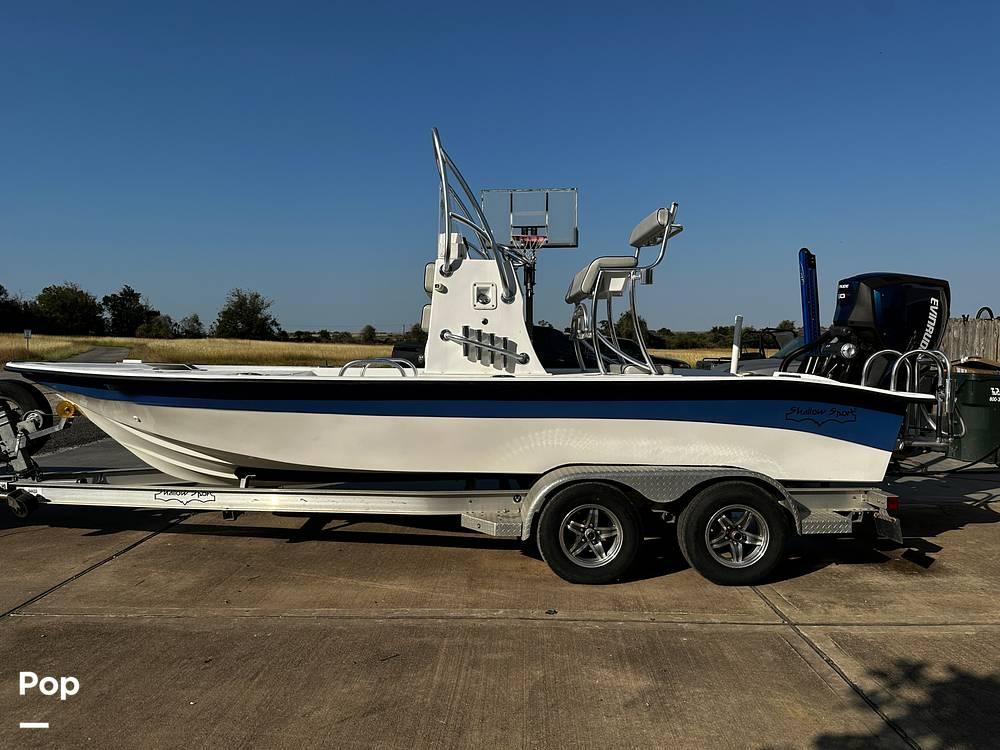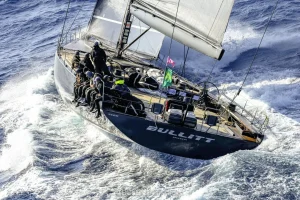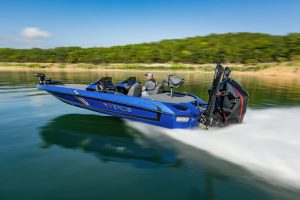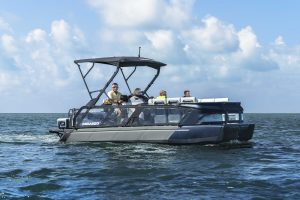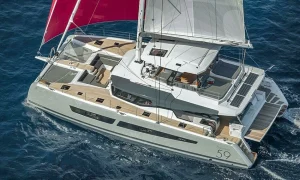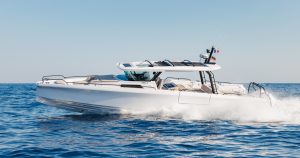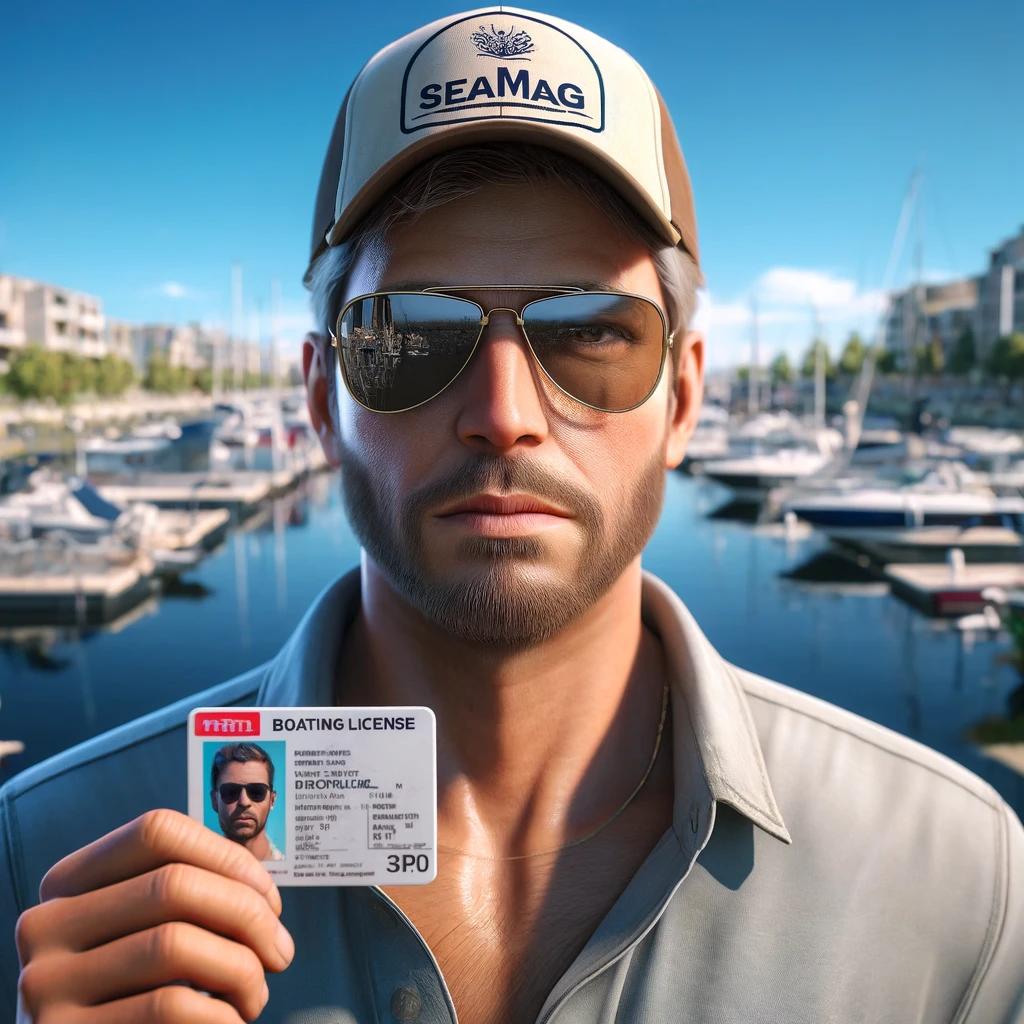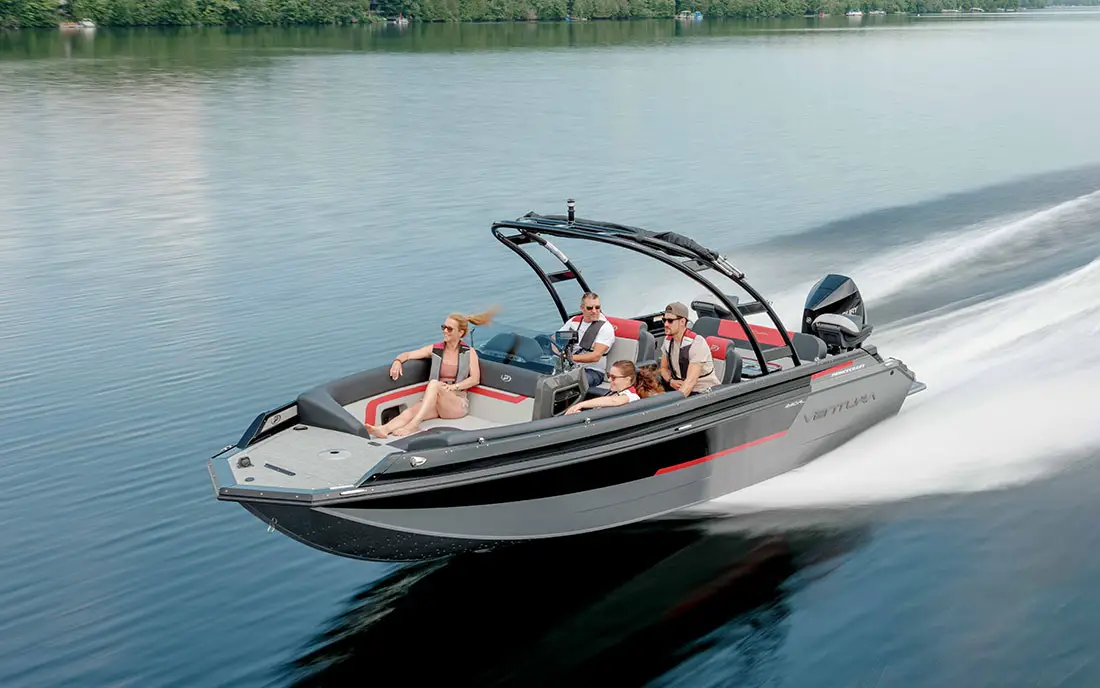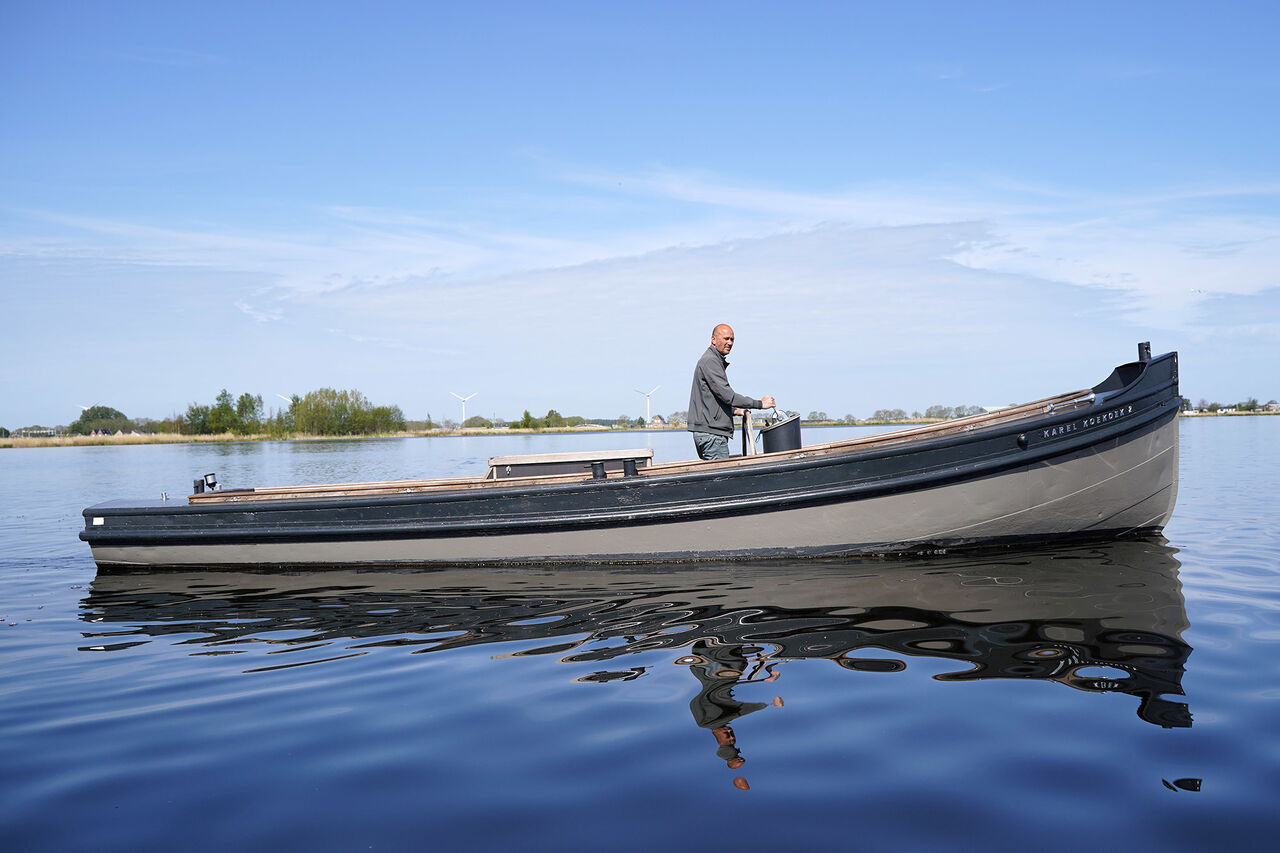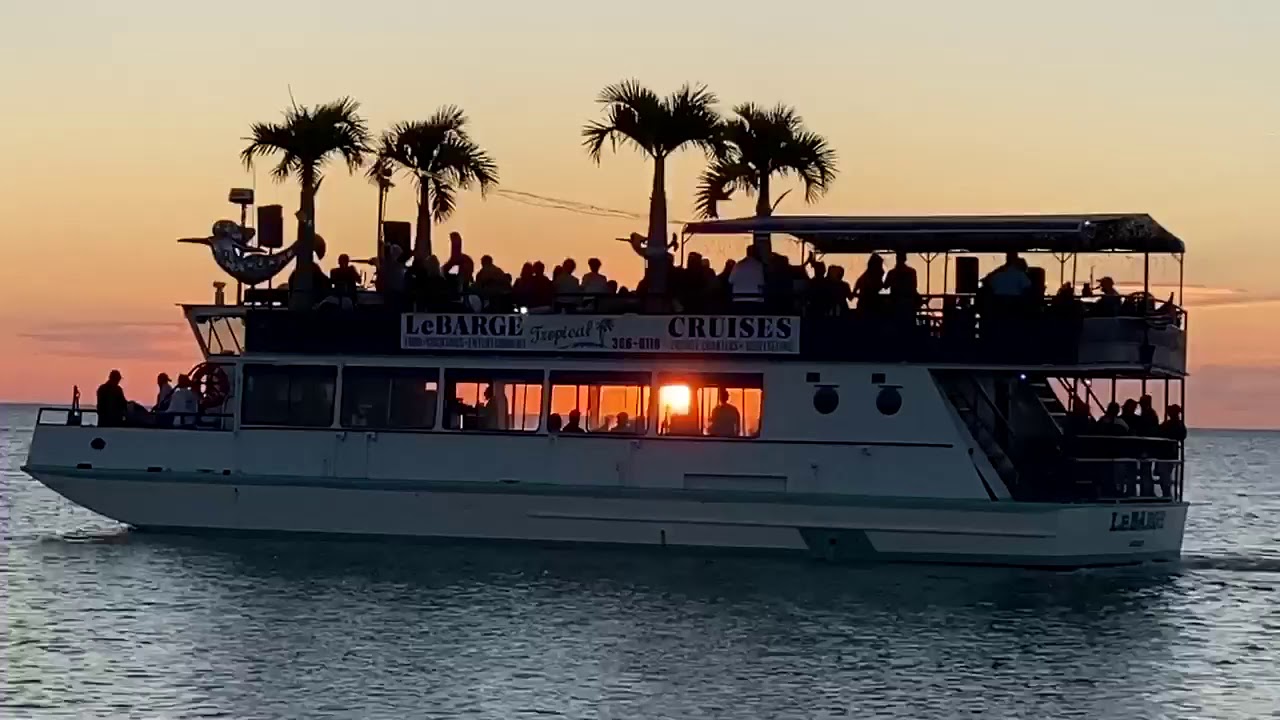
Shallow Sport Boats
Shallow sport boats are a popular choice among boating enthusiasts and anglers, due to their versatility in navigating shallow waters. These boats are specifically designed to operate in areas with minimal water depth, such as flats, inlets, and estuaries, where conventional boats might struggle. Shallow sport boats offer stability and exceptional maneuverability, giving boaters unique access to areas usually off-limits to larger vessels.
These boats are commonly used for fishing activities because of their shallow draft, providing access to hard-to-reach spots teaming with game fish. Often, shallow sport boats come equipped with features that increase their fishing capabilities, such as live wells, rod holders, casting platforms, and specialized storage compartments. Over the years, shallow sport boats have become a favorite among anglers and boating enthusiasts seeking an exciting and accessible experience on the water.
Key Takeaways
- Shallow sport boats excel in navigating shallow waters and are popular among anglers.
- These boats offer stability, maneuverability, and fishing-specific features.
- Shallow sport boats have gained popularity in recent years, becoming a favorite among boating enthusiasts.
Understanding Shallow Sport Boats
Shallow sport boats are versatile and specifically designed to navigate through shallow waters, making them a popular choice for fishing and exploring in coastal regions. These boats can be powered by outboard engines or jet drives, allowing for efficient propulsion and maneuverability.
A key feature of a shallow sport boat is its hull design. Typically, these boats will have a shallow draft to enable it to access shallow areas without running aground. Most shallow drafts range from 12 to 24 inches, depending on the specific model and size of the boat.
The performance of shallow sport boats can vary depending on their engine power and design. Generally, these boats provide quick acceleration and a smooth ride, thanks to their lighter weight and hydrodynamic shape. Materials such as fiberglass or aluminum are often used for constructing the hull, offering durability and maintaining structural integrity.
Shallow sport boats come in different sizes and configurations, intended to cater to various user preferences and activities. Here are some common boat types:
- Center Console Boats: A popular choice for fishing enthusiasts, these boats offer a central helm, providing 360-degree access to the water. Fishing amenities such as rod holders, bait wells, and tackle storage are often available.
- Bay Boats: Designed for use in protected, shallow waters, bay boats also include fishing features but are typically more compact and lightweight compared to center console boats.
- Flat Boats: With their exceptionally shallow draft, flat boats are perfect for navigating extremely shallow waters such as flats or marshes. They usually maintain a low profile and simple layout.
Safety is an important consideration when using a shallow sport boat. It is critical to always stay aware of the water depth, as running aground can cause damage to the boat and potentially result in injury. Regular maintenance checks on the hull and motor are recommended to ensure the boat remains in optimal condition.
In conclusion, shallow sport boats offer a variety of options for enthusiasts looking to enjoy water activities in shallow regions. With their unique designs and features, these boats provide excellent performance and adaptability to facilitate various recreational pursuits.
Historical Perspective of Shallow Sport Boats
Shallow sport boats have been a popular choice for recreational boating in shallow waters for several decades, originally gaining popularity in the southern United States. These versatile boats are well-suited for fishing and navigating areas with fluctuating water levels. In the early days, shallow sport boats were primarily used by professional fishermen, who needed to access shallow waters with ease to catch fish in abundance.
In 2009, the popularity of shallow sport boats continued to expand as more maritime enthusiasts discovered their benefits. The Corpus Christi area in Texas, for example, became a hub for these boats due to its shallow coastal waters, expansive bay systems, and vibrant fishing community.
The main features of shallow sport boats include:
- Shallow draft: Allows boating in shallow waters, even just a few inches deep
- Lightweight construction: Reduces fuel consumption and towing weight, making it easier to transport
- Flat-bottom hull design: Provides excellent stability and maneuverability in shallow waters
Shallow sport boats are often crafted from fiberglass or aluminum alloy for durability and resistance to corrosion. They typically range in length from 15 to 25 feet, depending on the specific model and usage. Some popular shallow sport boat designs include:
- Flat-bottom skiff: A basic, flat-bottomed hull, ideal for calm waters and fishing close to shore
- V-hull: A more versatile design, offering a smoother ride in choppy water while still maintaining a shallow draft
- Tunnel hull: A hull design with a recessed tunnel, allowing for better water flow and improved performance
In recent years, shallow sport boats have become even more adaptable, incorporating features such as poling platforms for sight fishing, casting decks for fly fishing, and advanced electronic equipment for navigation and fish-finding.
The rise of shallow sport boats in places like Corpus Christi, Texas, has led to a growing community of enthusiasts who organize regular fishing tournaments and events where like-minded boating fans can connect, share experiences, and learn new skills. These boats continue to make a significant impact on recreational boating, particularly for those looking to explore shallow waterways with ease and efficiency.
Significant Models of Shallow Sport Boats
The 21 Sport
The 21 Sport is a popular model in the shallow sport boat category. Built for comfort and performance, this boat is ideal for anglers and water enthusiasts alike. It features a spacious deck, ample storage, and a streamlined hull design that ensures a smooth and stable ride. The 21 Sport allows for easy maneuverability in shallow waters, making it perfect for fishing in hard-to-reach areas and exploring coastal environments.
The 18 Sport
The 18 Sport is another noteworthy model in the shallow sport boat lineup. This compact and agile boat is designed for those who prefer a smaller, more manageable vessel. The 18 Sport is perfect for shallow water fishing, as well as other water-based activities such as wakeboarding and water skiing. With its reduced size, it still provides ample space for passengers and equipment storage, making it a versatile option for a variety of marine adventures.
The 24 Sport
Moving up in size, the 24 Sport stands out as a great option for those seeking a larger shallow sport boat. This model offers increased passenger capacity and ample room for storage, accommodating gear for extended trips or inshore and offshore fishing excursions. The 24 Sport's deep-V hull and superior handling makes it suitable for navigating rough waters while maintaining stability in shallow areas.
The Shallow Sport 20 Classic
The Shallow Sport 20 Classic is a timeless model that continues to be a favorite among shallow water enthusiasts. This boat offers a perfect blend of functionality and classic design elements. The well-balanced hull ensures a comfortable and dry ride, while the spacious deck provides ample room for fishing and other water activities. The 20 Classic's design caters to both serious anglers and recreational boaters, making it a versatile and reliable option for shallow water adventures.
Essential Features of Shallow Sport Boats
Boat Stability
Shallow sport boats are designed to provide stability and maneuverability in shallow water environments, where traditional boats may struggle to operate. One key factor in achieving this stability is the hull design, which often features a flat or semi-V layout. This design allows the boat to easily glide through shallow areas without grounding on the bottom. Additionally, the wide beam and low center of gravity of these boats contribute to their excellent lateral stability, making them less prone to rocking or capsizing.
Hydraulic Steering and Raised Console
Another essential feature of shallow sport boats is the presence of hydraulic steering systems. Hydraulic steering provides smooth and responsive control, reducing the effort needed to steer the boat in tight spaces or through rough water. As a result, boaters can easily navigate through shallow or congested areas with greater efficiency and precision.
The use of a raised console is also a notable feature in shallow sport boats. A raised console provides a better vantage point for the captain, allowing them to see obstacles and gauge water depths effectively. This increased visibility is crucial in avoiding submerged objects and maintaining a safe course in shallow water environments.
The Power Pole Effect
Power poles are an innovative accessory often found on shallow sport boats. These vertical anchoring devices allow boaters to quickly and quietly anchor their vessel in shallow water without the need for a traditional anchor. By deploying the power pole into the seafloor, the boat becomes stationary, enabling anglers to fish a specific area without drifting away due to wind or current.
In summary, shallow sport boats boast several essential features like enhanced stability, hydraulic steering, raised console, and power poles, making them ideal for navigating shallow waters with ease and efficiency.
Performance Analysis
In Shallow Waters
Shallow sport boats are designed to provide optimal performance in shallow water conditions. Their hull design, propulsion system, and maneuverability make them suitable for navigating in water with minimal depth.
One critical aspect of a shallow sport boat's performance is its draft, which determines the minimum depth of water in which the boat can operate. The very shallow water acoustic communication channel research highlights the importance of understanding the characteristics of shallow water, as it directly impacts the performance of these boats.
In addition to the draft, the power-to-weight ratio of shallow sport boats influences their acceleration and top speed. A lightweight boat with a powerful engine can efficiently navigate in shallow waters without getting stuck or damaging the submerged terrain. These boats also benefit from hydrodynamic hull designs that minimize water resistance, allowing them to cut through shallow waters with ease.
Against the Chop
When analyzing the performance of shallow sport boats against the chop, we must consider their stability, ride quality, and handling. Shallow sport boats are known for having a flat bottom hull design, which allows them to plane quickly and maintain a comfortable ride in choppy conditions.
The ride quality of a shallow sport boat depends on its ability to reduce the impact of waves and maintain stability. Many shallow sport boats have a wide beam, which provides more stability when faced with rough waters. This feature, combined with the flat-bottom hull design, results in better resistance against choppy conditions.
Handling is another vital aspect of a shallow sport boat's performance. Due to their lightweight and agile design, these boats typically have excellent maneuverability, allowing them to navigate tight spaces and avoid obstacles with ease. The throttle response and steering capabilities in these boats are crucial in ensuring optimal performance in challenging conditions, such as navigating through choppy waters and strong currents.
In conclusion, shallow sport boats are designed to provide excellent performance in both shallow waters and against the chop. By combining a flat-bottom hull design, lightweight construction, and adequate power, these boats can offer a stable, comfortable, and agile ride, making them ideal for various water-based activities.
Shallow Sport Boats for Fishing
Shallow sport boats are designed for fishing in shallow waters, such as flats, bay areas, and inshore spots. These boats have features specifically suited for shallow water fishing, such as a shallow draft, giving them the ability to operate in depths as low as 8 to 12 inches of water. In this section, we will discuss the use of live wells and poling platforms in shallow sport boats for fishing.
Live Well Usage
A live well is an essential feature in shallow sport boats designed for fishing. Fishermen use live wells to store live bait and keep caught fish alive, ensuring their freshness until they are ready for consumption or release. Generally, live wells are placed at the stern or in the center of the boat and come equipped with an aerator or a recirculating water pump to maintain water quality and oxygen levels for the fish and bait.
In shallow sport boats, space may be a premium. However, live wells are strategically designed to make the most out of the available space, including rounded corners and insulating material to maintain a cool temperature environment for the fish. Some shallow sport boats even feature dual live wells, allowing for the separation of bait and caught fish.
Using the Poling Platform
The poling platform is another essential feature for shallow sport fishing and is located at the stern of the boat. It is an elevated platform where the angler can stand and propel the boat using a long pole, referred to as a push pole. The advantage of a poling platform is the ability to silently maneuver the boat in shallow water without disturbing the fish, making it the ideal method for flats and inshore fishing.
Shallow sport boats often come equipped with numerous rod holders on the poling platform, allowing for quick access to a variety of fishing gear when needed. The poling platform may also include additional storage compartments for tackle and other fishing equipment.
The combination of live wells and poling platforms in shallow sport boats makes them the ultimate choice for shallow water fishing, providing both functionality and convenience. With these features, anglers can enjoy an efficient and effective fishing experience in some of the most challenging fishing environments.
Getting the Maximum from your Shallow Sport Boat
Maintaining your Boat
Regular maintenance is crucial for getting the most out of your shallow sport boat, especially when navigating across dry and shallow areas. Make sure to inspect the hull frequently for signs of damage or wear, and repair any issues promptly to keep your boat performing at its best.
- Cleaning: Keep the boat's hull and engine clean to reduce drag and ensure smooth operation. Remove any dirt, debris, or salt deposits after each use.
- Monitoring Fluid Levels: Regularly check and top off essential fluids like engine oil, coolant, and fuel, as well as lubricating moving parts to maximize efficiency.
Upgrades for Better Performance
Investing in performance upgrades can help you get the maximum from your shallow sport boat. Some popular enhancements include:
-
Jackplate Installation: A jackplate raises the boat's engine vertically, allowing it to operate in shallower water without risking damage. Jackplates are particularly useful for bay boats that frequently venture into shallow waters.
-
Trim Tabs: These adjustable appendages work to fine-tune the boat's performance by altering the running angle. Adjusting trim tabs can lead to a smoother ride, better fuel efficiency, and improved handling.
-
Advanced Electronics: Modern GPS and sonar systems provide valuable information for navigating shallow waters. Accurate depth data allows for safer operation, while sonar technology helps locate fish, making your expeditions even more rewarding.
| Upgrade | Benefits | Considerations |
|---|---|---|
| Jackplate | - Improved performance in shallow water | - Requires professional installation |
| Trim Tabs | - Smoother ride | - May increase complexity of operation |
| - Better fuel efficiency | ||
| Advanced | - Precise navigation | - Premium models may be costly |
| Electronics | - Effective fish locating |
Remember, keeping your shallow sport boat in top shape and investing in performance upgrades can help maximize your experience in the water. Ultimately, it's essential to prioritize safe navigation and maintenance to enjoy smooth sailing across any shallow waters.
Frequently Asked Questions
What is the price range of shallow sport boats?
Shallow sport boats can vary in price depending on factors like size, model, and features. Generally, prices can range from around $25,000 for a basic model to well over $100,000 for a high-end, fully-equipped model.
How do shallow sport boats perform in shallow water?
Shallow sport boats are specifically designed for excellent performance in shallow water conditions. Their hull design allows them to operate in water as shallow as 1 foot deep, making them ideal for navigating inshore waters, flats, and other shallow environments.
What are common features and specifications of shallow sport boats?
Common features of shallow sport boats include a shallow draft hull design, a raised bow for smooth and dry rides, and various casting platforms. Other specifications can vary depending on the model and customization, but some typical elements include a center console layout, seating options like leaning posts and bench seats, and storage compartments for fishing gear and personal items.
Where can I find used shallow sport boats for sale?
Used shallow sport boats can be found through a variety of platforms, such as online classified ad websites, boat dealerships, and marine consignment shops. Additionally, boating forums and social media groups may have listings for used shallow sport boats, as well as recommendations or advice from fellow boating enthusiasts.
What materials are shallow sport boats typically made of?
Shallow sport boats are typically made from fiberglass or composite materials. These materials are chosen for their durability, strength, and light weight. Using these types of materials allows the boat to achieve a shallow draft, while also providing good fuel efficiency and performance.
What are the differences between Shallow Sport Classic and other models?
The Shallow Sport Classic is a popular model within the shallow sport boat category and is known for its classic design and overall performance. Differences between the Classic and other models might include the hull design, console layout, seating configuration, storage options, and additional features like integrated live wells or advanced electronics packages. Comparing the Classic to other models will help you determine which specific shallow sport boat best meets your individual needs and preferences.


